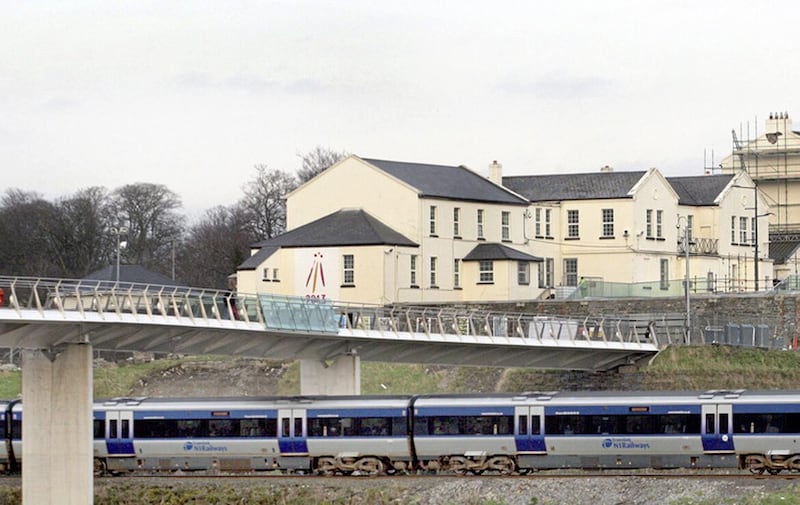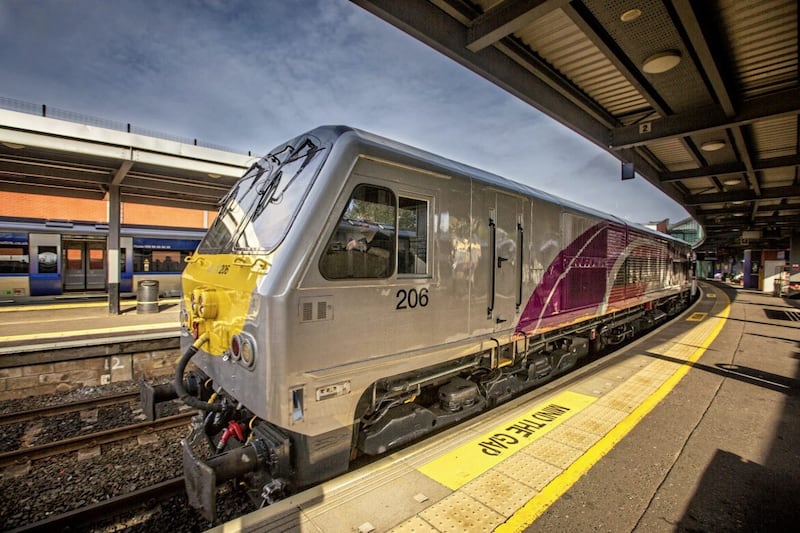When leaks began to emerge last week about the All-Island Strategic Rail Review it was clear it was going to be somewhat visionary, to put it mildly. Subsequent details reveal it has crossed the line from vision to fantasy.
The review was commissioned in 2021 by the northern and southern transport ministers. It expanded a commitment under New Decade, New Approach for a feasibility study into a high-speed “spine” between Belfast, Dublin and Cork.
This was changed to “higher-speed”, suggesting the review would be realistic. Although there will never be a TGV between Cork and Belfast, there can certainly be an American-style programme of ‘higher-speed rail’, where existing lines are upgraded bit by bit to get average speeds over 100 mph. That could halve the journey time from Belfast to Dublin, to as little as an hour, delivering as good a service as both cities will ever need.
However, the review has added whole new rail routes across Ireland, for passengers and freight. Stormont would meet a quarter of the £30 billion cost over 25 years.
Read more:
Rail review recommends reviving old tracks and raising top train speeds
Varadkar and Ryan on different tracks over railway investment
Newton Emerson: DUP Stormont boycott leaves NI investment summit with a mountain to climb
As transport commentator Wesley Johnson has pointed out, this is substantially more than is spent on all road building. Comparing it to the A5 dual-carriageway, still in planning after 16 years and unaffordable at £1.6 billion, gives context to the task.
The proposed new line from Portadown to Derry, costing almost twice as much as the A5, has received most media attention. Where the review really loses contact with reality is proposing a new line between Lisburn and Newry.

While this is not an entirely new idea and it would enable faster and more frequent services to Dublin, it would come at the astronomical £2 billion cost of building 30 miles of double-track mainline. The only town of any size it would add to the network is Banbridge, population 17,000.
Upgrades to the existing cross-border line could deliver nearly all the same benefits for a fraction of the cost – it could even include Banbridge, with a shuttle bus to Scarva. The bit-by-bit approach of higher-speed rail means upgrades might actually happen, in contrast to a grand project that will never get off the ground.
The new Derry line is another doomed distraction. Upgrading the existing line and extending it to Letterkenny would meet nearly all the same objectives for a fraction of the cost.
One of the review’s credible proposals is reopening the mothballed line between Lisburn and Antrim, partly to facilitate a station at Belfast International Airport. This would also allow twice as many Belfast to Derry services and cut 20 miles off the distance between Derry and Dublin.

That means the only real advantage of a new line is bringing trains back to Dungannon, Omagh and Strabane, which cannot justify the cost. It would be far cheaper to buy each town a fleet of buses and give every resident a free Translink pass for life. Why not seriously consider this, if we are going to consider something as unserious as a new railway?
The review’s departure from reality appears driven by cynical politics. Historical underinvestment in the west of Northern Ireland is well understood and explains the interest in the new Derry line. But addressing that legacy with a hopeless promise will merely creating a new grievance. In 25 years, people in Tyrone will be asking why the review came to nothing.

Pork barrel politics is also evident. The SDLP commissioned the review at Stormont, presumably explaining the addition of Derry to the New Decade, New Approach “spine”.
A proposed new line through Monaghan looks like similar crowd-pleasing by the Irish government. Dublin’s decision to publish the review as a draft, without sign-off from Stormont, may be electioneering that can no longer wait for devolution’s return. By the time Tyrone and Monaghan realise their barrels are empty, the politicians who rolled them out will be long gone.
A final political factor was the UK government’s Union Connectivity Review, published in 2021. This sought to introduce a distinction between devolved and national infrastructure, much as the US has state and federal highways. New funding was to be offered for national projects, which in Northern Ireland included internal and cross-border rail upgrades, rail links to airports and “participation in the All-Island Strategic Rail Review”.
The SDLP denounced this as an attack on devolution and said any extra funding should be given to Stormont. So it turned down free pork to make sure “all-island” rather than “union” was stamped on the barrel.
Well done to all concerned.








